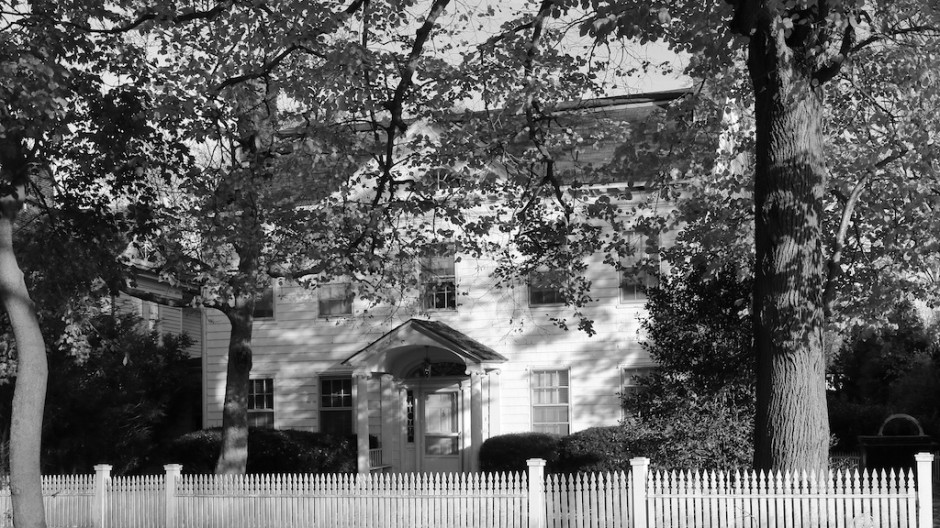WALKING TOUR of HISTORIC SAG HARBOR
Captions courtesy of The Society for the Preservation of Long Island Antiquities (SPLIA), now Preservation Long Island
and the Sag Harbor Historical Society.
~~~~~~~~~~~~~~~~~~~~~~~~~~~~~~~~~~~~~~~~~~~~~~~~~~~~~
Long Wharf

Postcard showing the first location of the Sag Harbor Yacht Club when it was located (1899-1913) west of Long Wharf (pictured in the background). It then moved east of Long Wharf to its present location. Note the Steamboat “Greenport” is docked at Long Wharf.
Since 1771, Long Wharf has been Sag Harbor’s hub. It was rebuilt and extended for the whaling trade in 1821. In its heyday ships were lined up six deep, preparing for voyages lasting six months to two years, and traveling as far as the Pacific. From the Wharf to Bay and West Water Streets, the harbor bustled with businesses serving the trade–sail makers, ropewalks, foundries, and coopers. They all disappeared along with the whaling trade, or were snuffed out by notorious fires that engulfed downtown Sag Harbor, notably in 1817, 1845 and 1877. Sag Harbor was an international trading port and in 1789 designated New York State’s first Port of Entry.
—————————————
Windmill at Long Wharf*
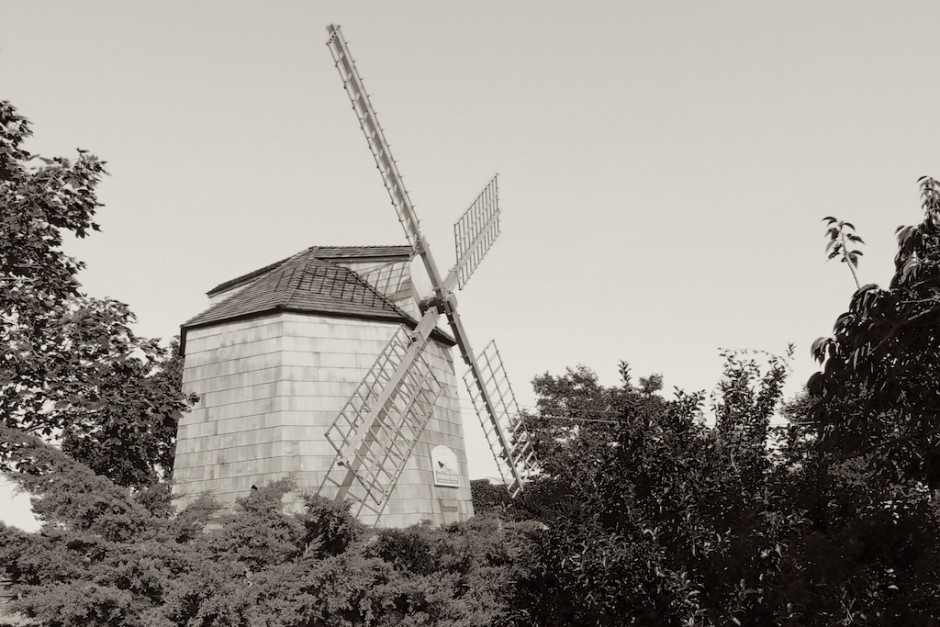
Windmill Replica, 1966
Erected by the citizens of Sag Harbor in the year nineteen hundred sixty-six as an historic memorial to the great whaling industry which is part of our heritage. The original windmill was erected in 1760. This reconstruction was completed under the auspices of the 1966 Old Whalers Festival. — John A. Ward, Jr. Chairman.
This windmill replica donated to the Village of Sag Harbor by the Old Whalers Festival Committee, 1984.
— Plaques on site.
~~~~~~~~~~~~~~~~~~~~~~~~~~~~~~~~~~~~~~~~~~~~~~~~~~~~~
Main Street, North > South/East Side

American Hotel, c. 1845
The hotel was rebuilt by cabinetmaker Nathaniel Tinker for his business premises after the fire of 1845. The site is thought to be that of the earliest residence in Sag Harbor, James Howell’s Inn, where Lieut. Col. Jonathan Meigs captured British officers in their beds during the Revolutionary War. The porch, with its columns in the Gothic Revival style, was added across the front when the building was converted to a hotel in 1877. (Sag Harbor Historical Society)
~~~~~~~~~~~~~~~~~~~~~~~~~~~~~~~~~~~~~~~~~~~~~~~~~~~~~
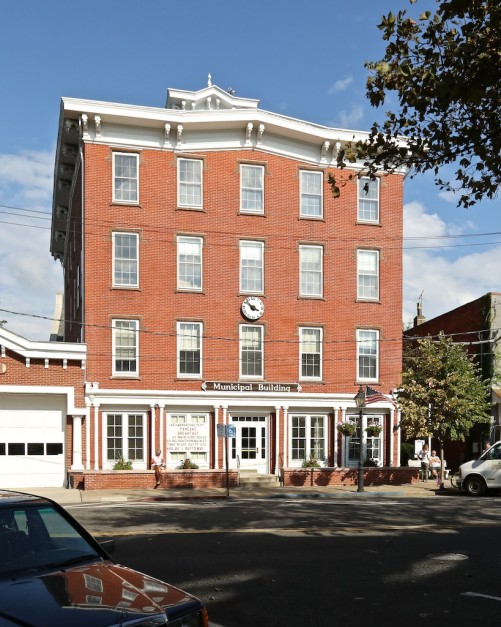
Municipal Building, c. 1846
Built as a hotel, the construction of this imposing Italianate building after the disastrous fire of 1845 expressed the feeling of confidence in Sag Harbor’s future during the whaling era.
~~~~~~~~~~~~~~~~~~~~~~~~~~~~~~~~~~~~~~~~~~~~~~~~~~~~~
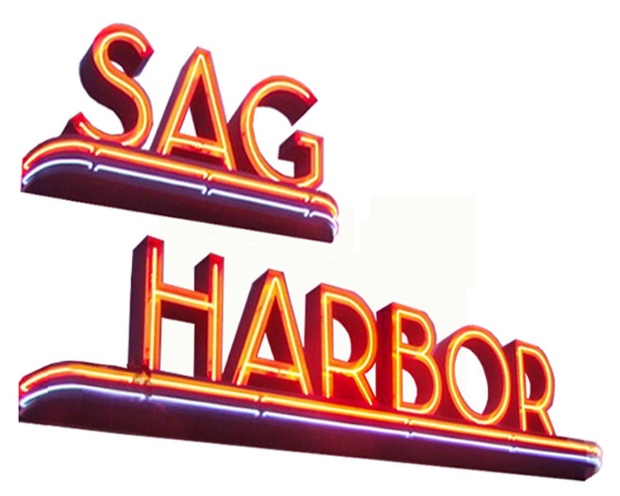
Sag Harbor Cinema — Opened as the Elite Theatre, November 1, 1919
Destroyed by fire in December, 2016 — rebuilt in 2019.
—————————————
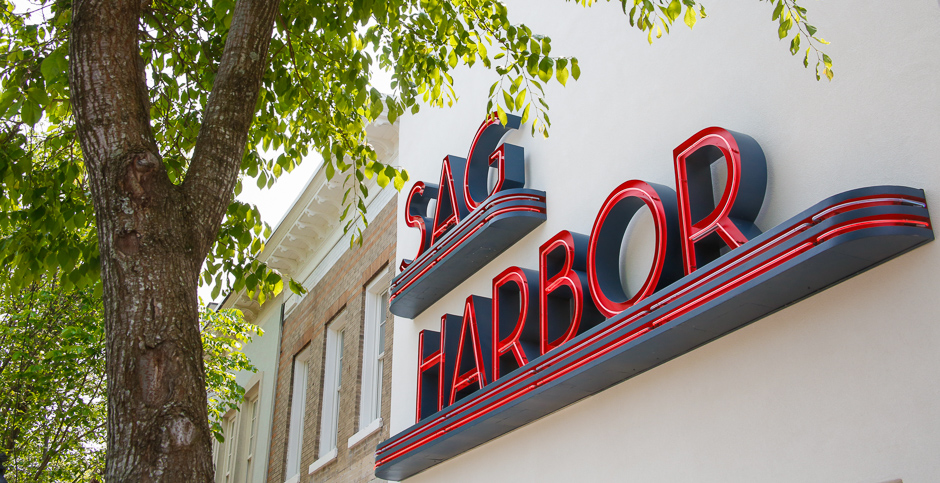
May 31, 2019
~~~~~~~~~~~~~~~~~~~~~~~~~~~~~~~~~~~~~~~~~~~~~~~~~~~~~
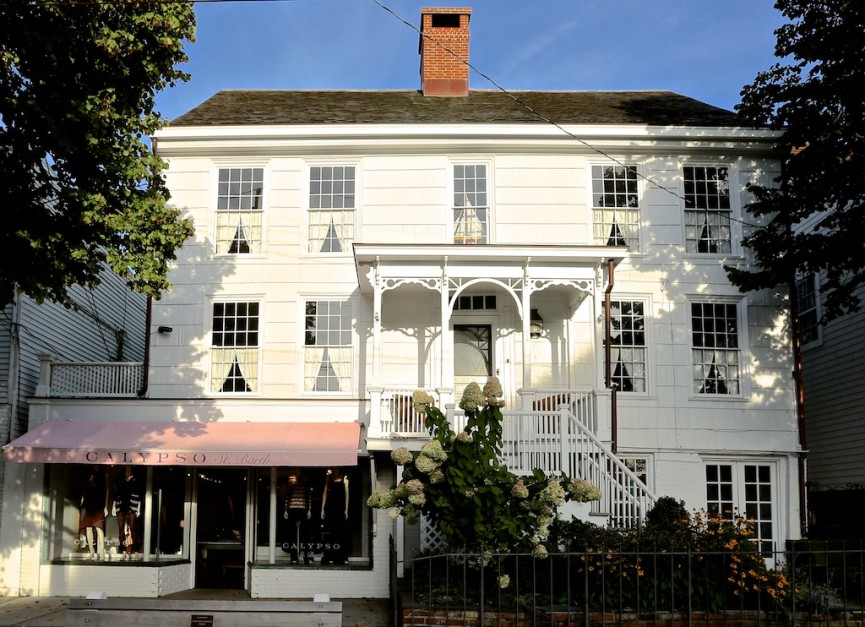
Peleg Latham House, c. 1790
Designed with a residence above and a commercial story at street level, the Peleg Latham House is a typical Sag Harbor merchant’s house of the Federal Period.
~~~~~~~~~~~~~~~~~~~~~~~~~~~~~~~~~~~~~~~~~~~~~~~~~~~~~
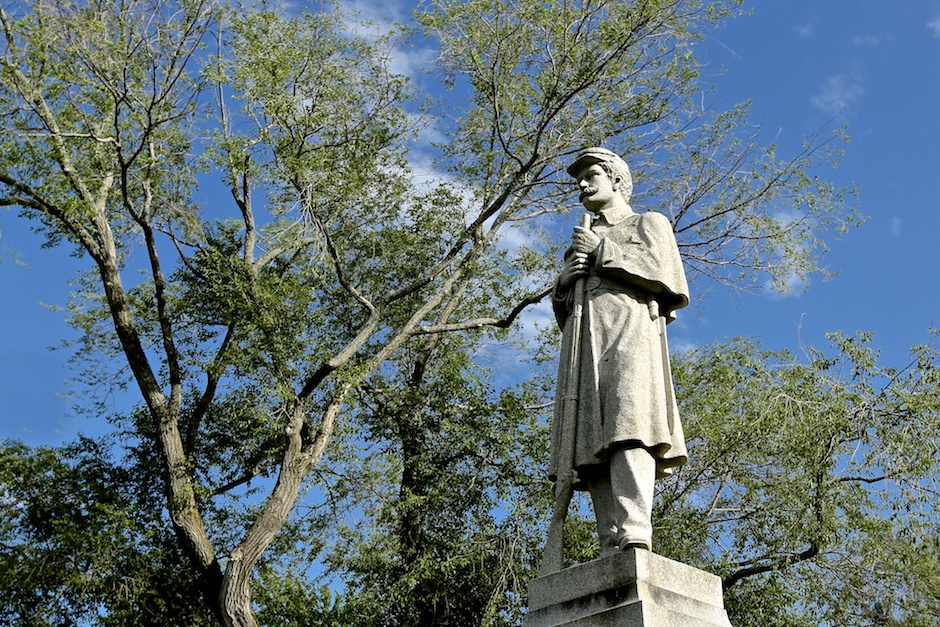
Soldiers Monument, Main Street, Sag Harbor
—————————————
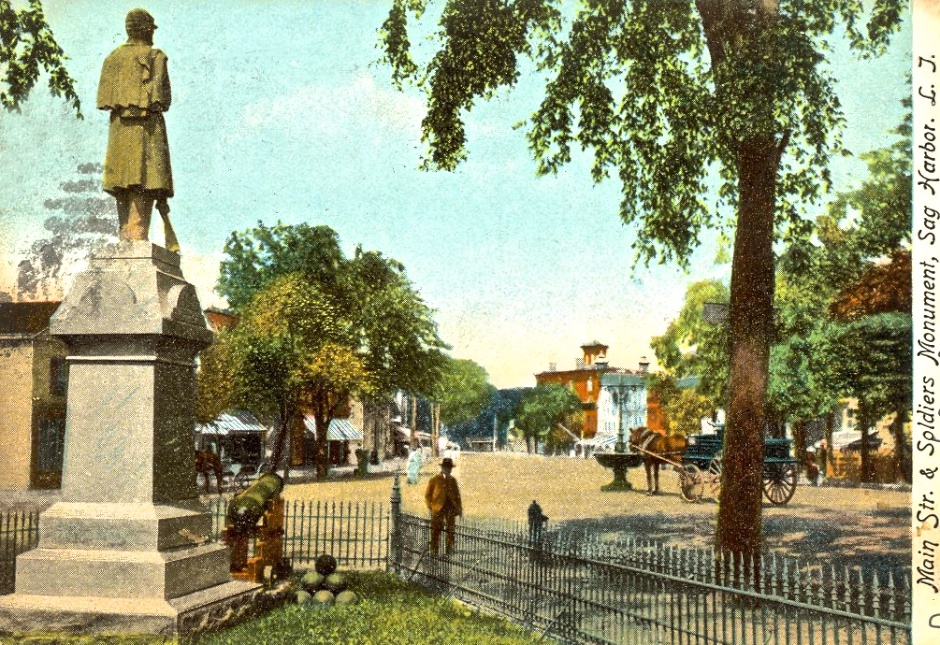
Soldiers Monument, Sag Harbor, Archival Postcard courtesy of the Long Island Collection at the East Hampton Library
~~~~~~~~~~~~~~~~~~~~~~~~~~~~~~~~~~~~~~~~~~~~~~~~~~~~~
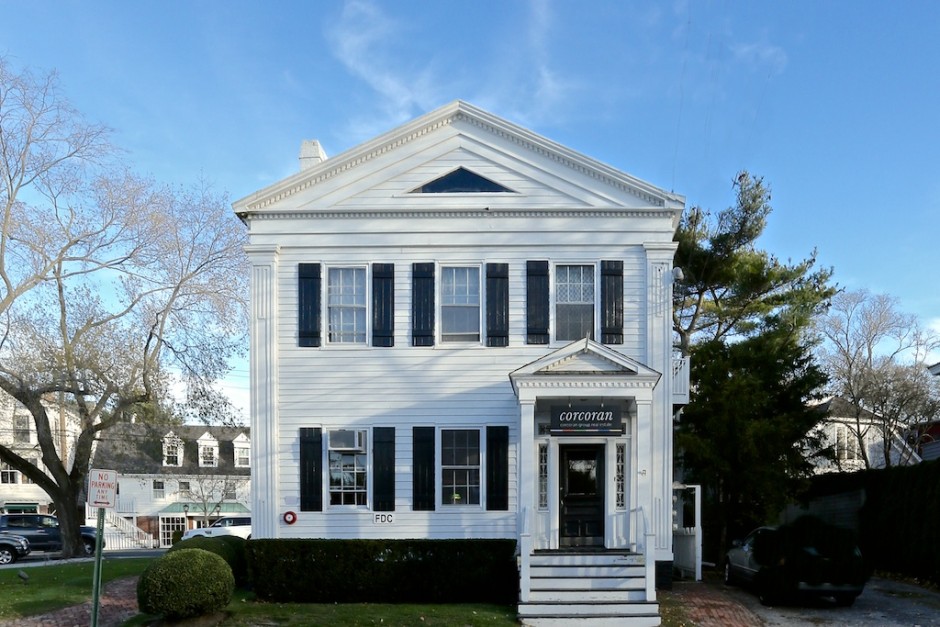
Stanton House, c. 1840
In the Greek Revival style even domestic architecture is patterned on the temple form. Gable ends faced the street, doors had both transom and side lights, and pilasters often adorned the side of facades.
~~~~~~~~~~~~~~~~~~~~~~~~~~~~~~~~~~~~~~~~~~~~~~~~~~~~~
Hope House, c. 1860
Victorian house are rare in Sag Harbor due to the dramatic decline in the village’s fortunes following the end of the whaling era. The Mansard roof Hope House is in the French Second Empire or General Grant style.
—————————————

~~~~~~~~~~~~~~~~~~~~~~~~~~~~~~~~~~~~~~~~~~~~~~~~~~~~~
Sybil Douglas House, c. 1790
This high-style, five bay Georgian house is noteworthy for its fine detail. It was built for Benjamin Huntting I who sent out the first successful deep sea whaling ship to Brazil in 1785.
~~~~~~~~~~~~~~~~~~~~~~~~~~~~~~~~~~~~~~~~~~~~~~~~~~~~~

John Jermain Memorial Library, c. 1910.
Fashioned in the Beaux Arts Classical Revival style so often chosen for public buildings at the turn of the century, the John Jermain Memorial Library was donated by Mrs. Russell Sage to the Village in honor of her grandfather. With its round granite columns and unique dome, it is an impressive edifice. 100 years later, funds were raised to rehabilitate, enlarge and modernize the building so that John Jermain may continue serving the Village…….Photo January 11, 2019.
—————————– RESTORATION —————————–
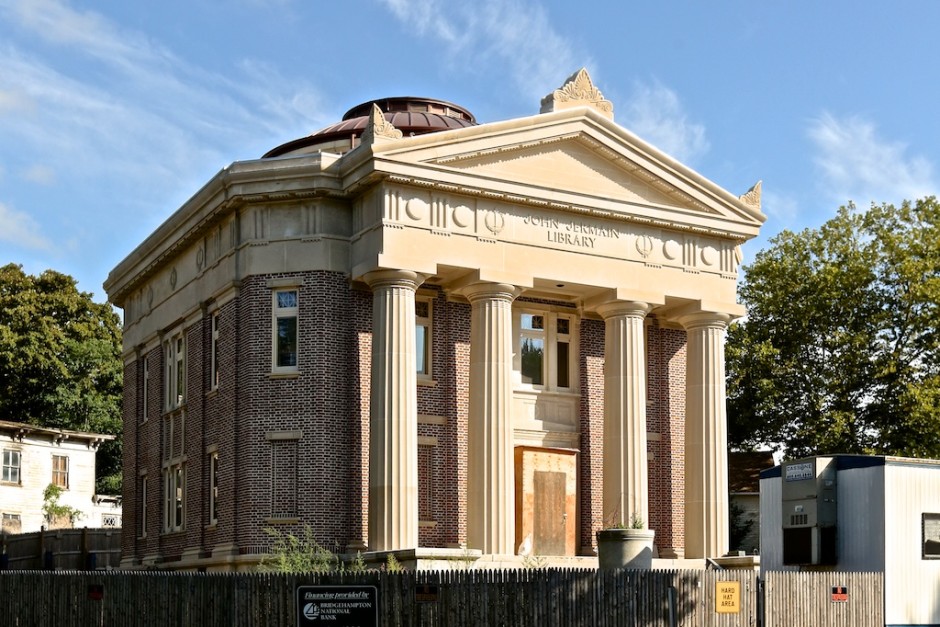
John Jermain Memorial Library, restoration, July 25, 2014
—————————————
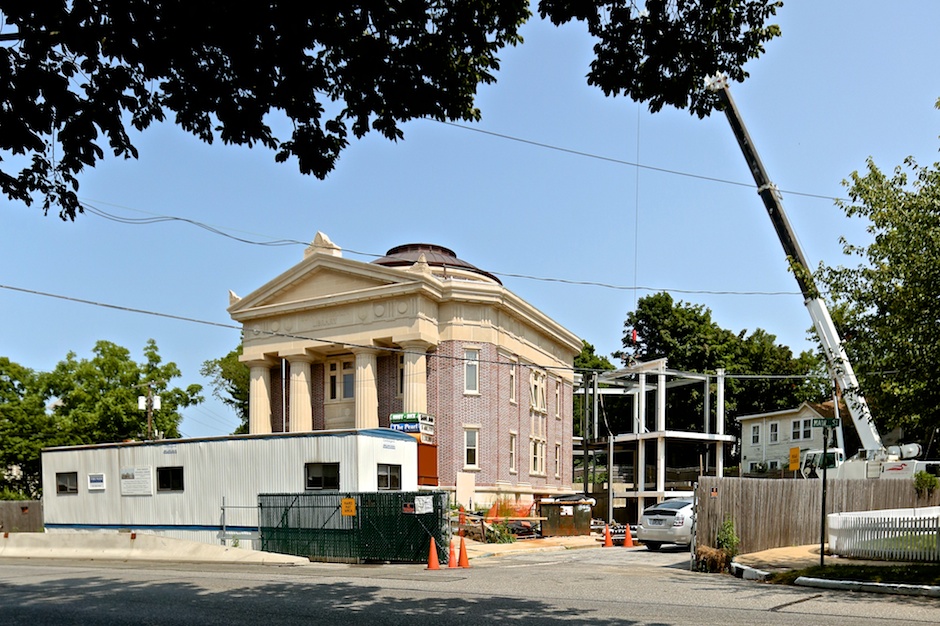
—————————————
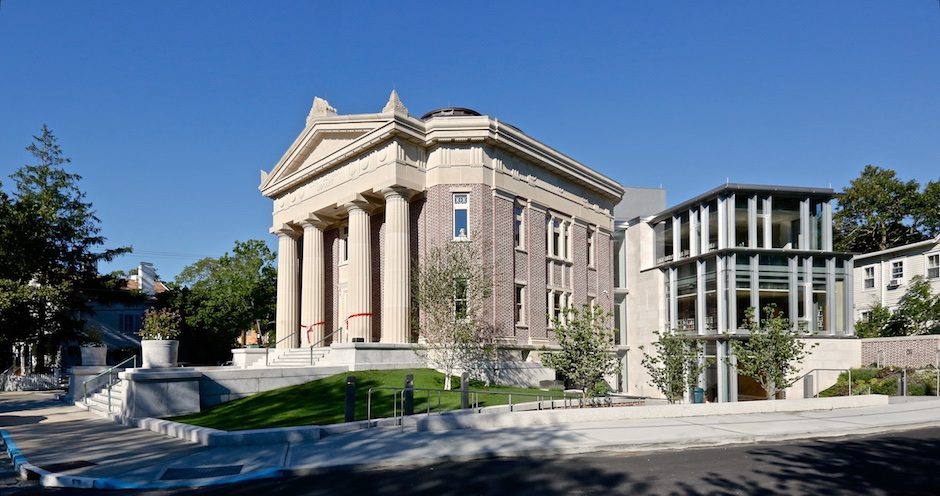 July 27, 2016
July 27, 2016
—————————————
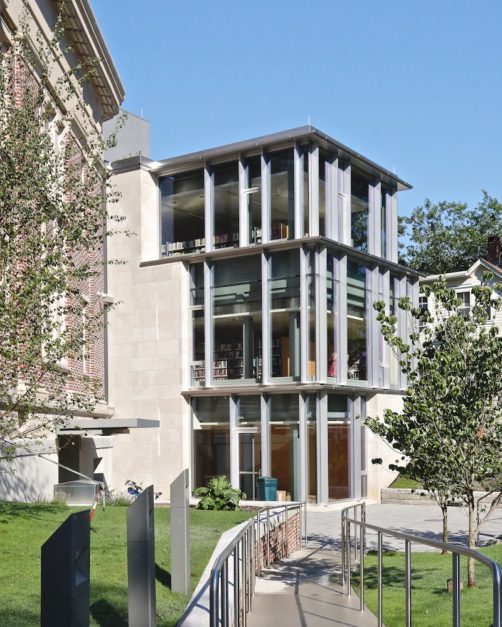
July 27, 2016
Visit AAQ/Construction/Restoration: John Jermain Memorial Library
~~~~~~~~~~~~~~~~~~~~~~~~~~~~~~~~~~~~~~~~~~~~~~~~~~~~~
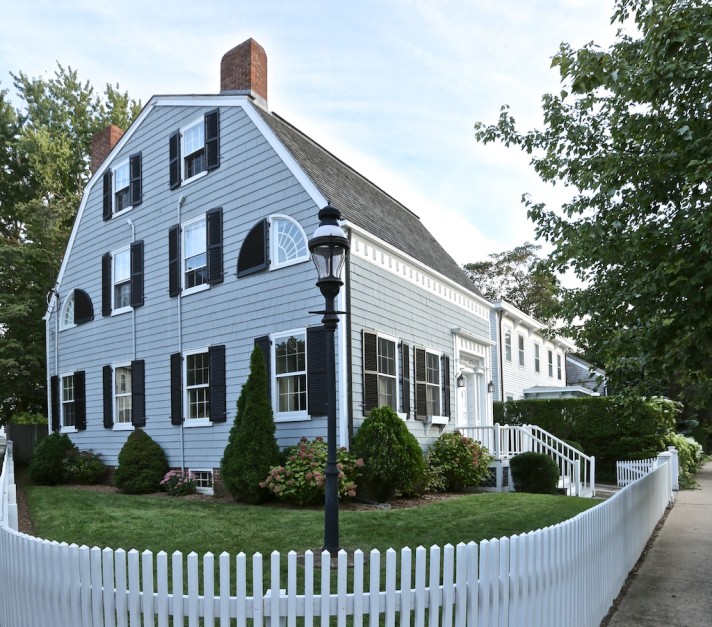
Van Scoy House, c. 1810
An imposing gambrel roof is a local characteristic of Federal Period buildings associated with Benjamin Glover, Sag Harbor’s builder-carpenter. Note the arrangement of windows on the side.
Note: The house is named for Arnold Van Scoy, a Daguerrotype photographer who lived here in the 1850s.
—————————————

~~~~~~~~~~~~~~~~~~~~~~~~~~~~~~~~~~~~~~~~~~~~~~~~~~~~~
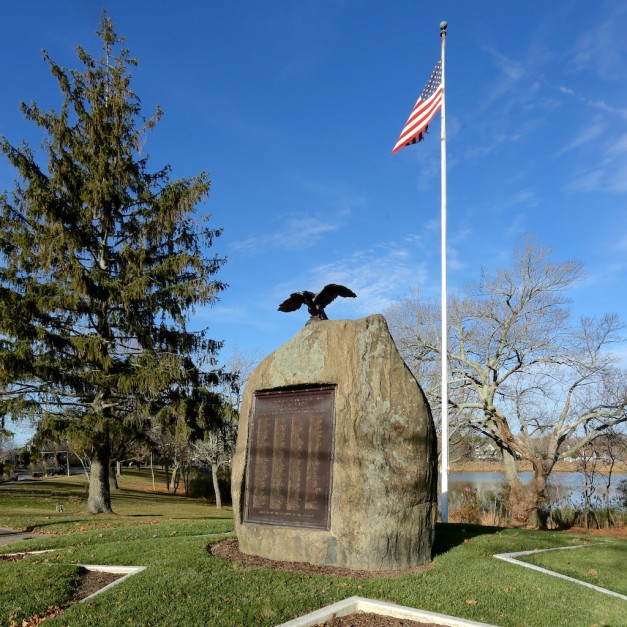
Great War Memorial at Otter Pond – Corner of Main & Jermain Streets.
“1917 – 1919: In honor of the men of Sag Harbor who served in the Great War and in memory of those who gave their lives.”
———————- See Addendum ——————

~~~~~~~~~~~~~~~~~~~~~~~~~~~~~~~~~~~~~~~~~~~~~~~~~~~~~
Main Street, South > North/West Side
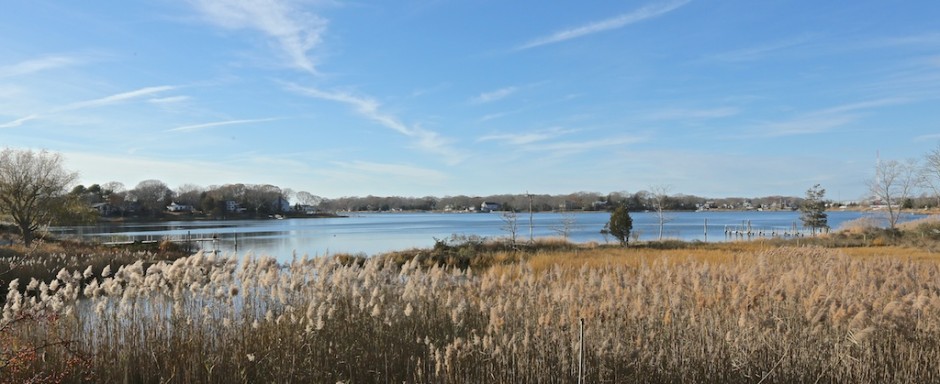
Upper Sag Harbor Cove
~~~~~~~~~~~~~~~~~~~~~~~~~~~~~~~~~~~~~~~~~~~~~~~~~~~~~
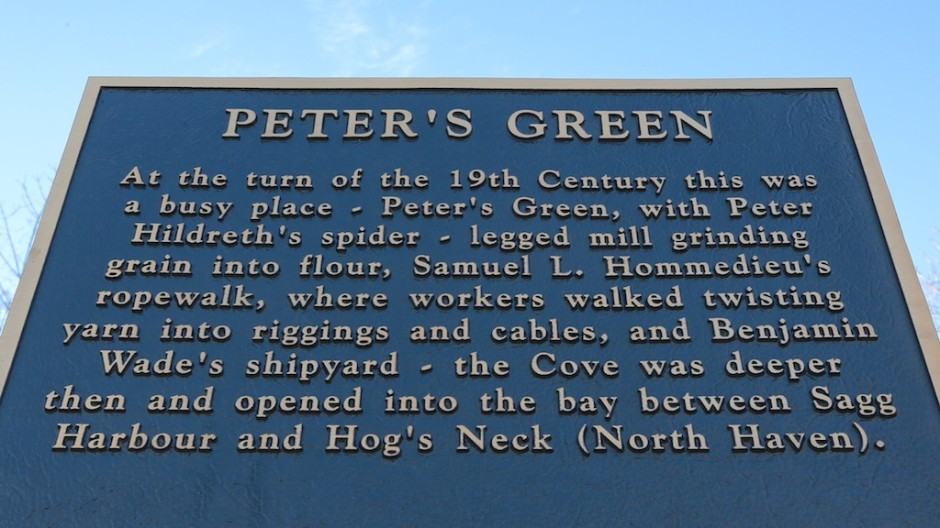
Peter’s Green at end of Green Street, left turn at Glover Street, off Main Street, west side. The ‘Cove’ referred to is Upper Sag Harbor Cove. Location also featured a Long Island Railroad spur. (Sag Harbor Historical Society plaque.)
~~~~~~~~~~~~~~~~~~~~~~~~~~~~~~~~~~~~~~~~~~~~~~~~~~~~~
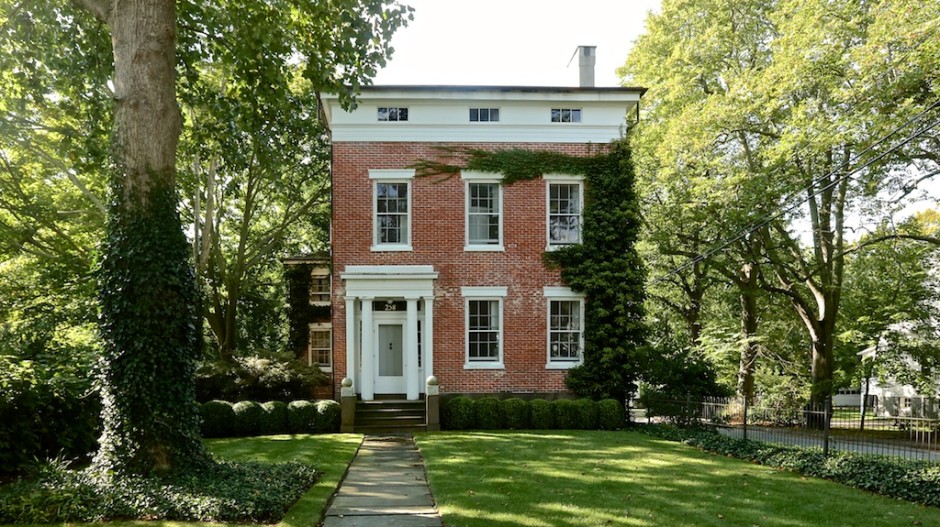
L’Hommedieu House, c. 1840
Closely resembling a New York City residence, this detached townhouse looks like it belongs in an urban context. The L’Hommedieus were involved in the West Indies trade. Samuel L’Hommedieu, grandson of a Huguenot fugitive, operated a ropewalk–a long, narrow building where workers walked back and forth twisting hemp into rope for use in ships’ riggings, lines and cables.
~~~~~~~~~~~~~~~~~~~~~~~~~~~~~~~~~~~~~~~~~~~~~~~~~~~~~

Benjamin Huntting House, c. 1845
Benjamin Huntting II hired architect Minard Lafever, who designed the Old Whaler’s Church, to design a classic, Greek temple-front mansion. It later became the summer home of Mrs. Russell Sage, and the Whaling Museum in 1936. As more than one text states, “a monument to the self-confidence of the successful whaler,” with its temple-front portico and fluted Corinthian columns, its blubber-spade decoration along the roofline and whale jawbones framing the front door. The interior has been renovated and is open to the public as a museum for whaling artifacts and paraphernalia, including a whaleboat in the front yard. It is Long Island’s finest example of Greek Revival architecture.
Visit: Sag Harbor Whaling & Historical Museum
—————————————
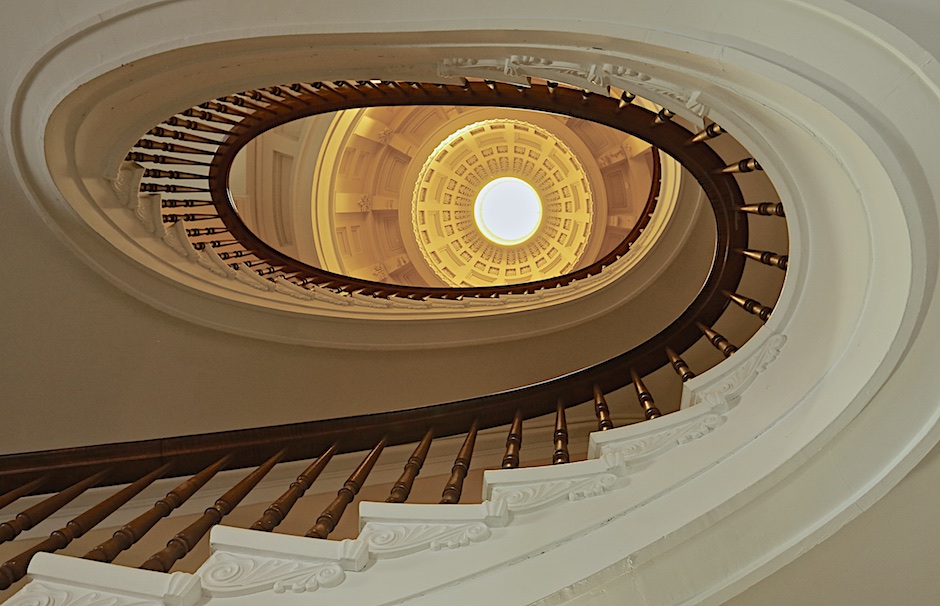
—————————————
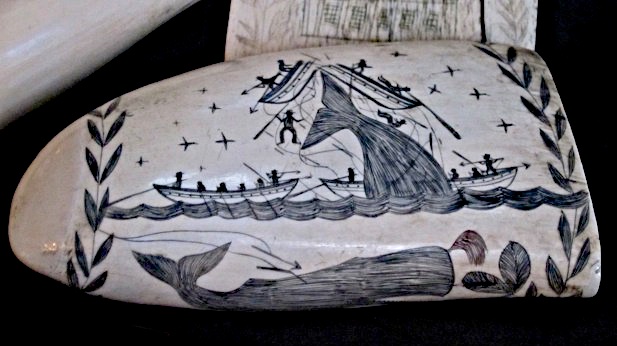
Sailors Folk Art — Scrimshaw. Photo: Richard Doctorow, Collections Manager.
—————————————
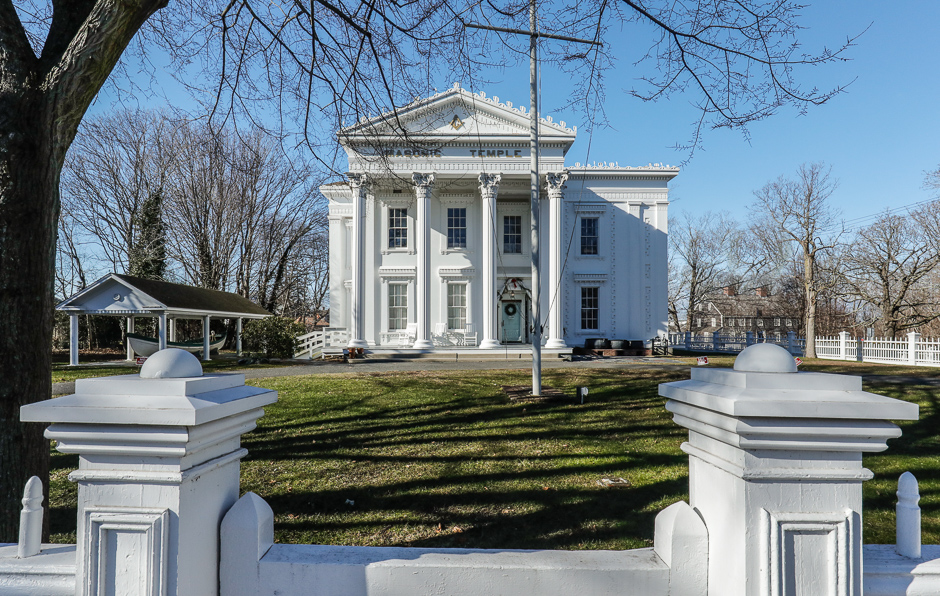
—————————————
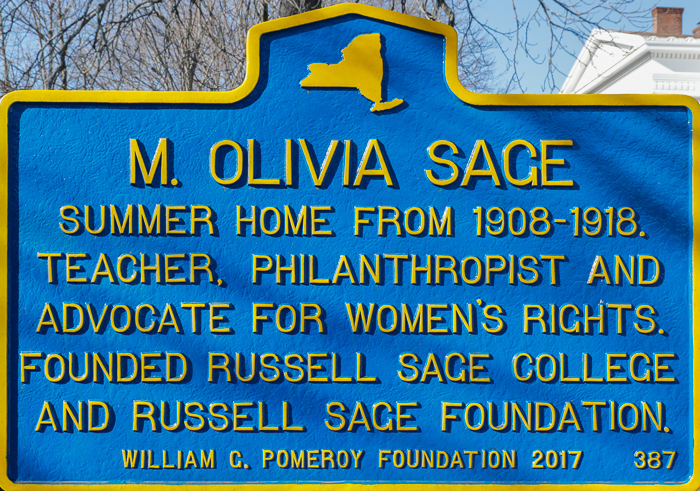
Above two photos / January 9, 2019.
~~~~~~~~~~~~~~~~~~~~~~~~~~~~~~~~~~~~~~~~~~~~~~~~~~~~~
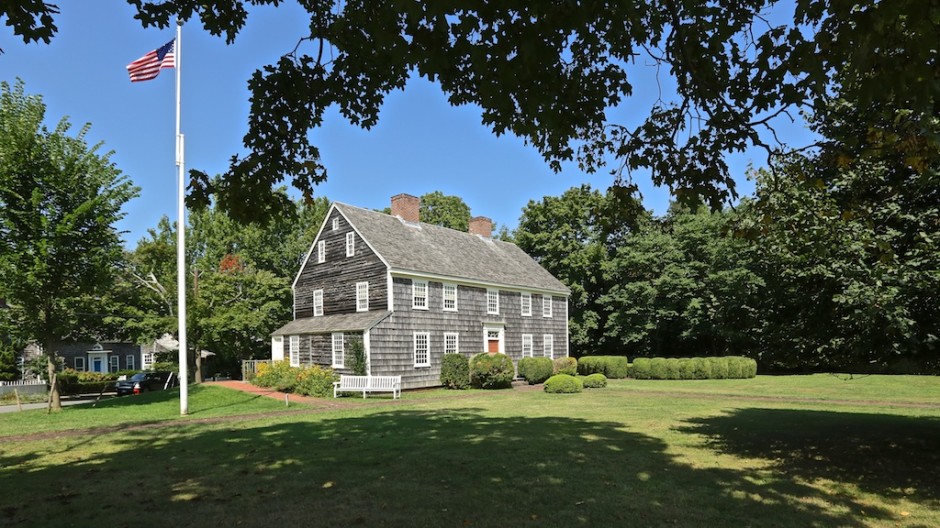
Custom House, c. 1790
Sag Harbor was already a thriving maritime community when it became one of the first American seaports to be designated an official Port of Entry in 1789. For the next three decades, Henry Packer Dering, U.S. Custom Master, would be in charge of meeting the trading vessels and whaling ships which sailed into local waters. In this Federal house, Dering not only conducted customs business but raised nine children.
Visit: preservationlongisland.org
(formerly Society for the Preservation of Long Island Antiquities / SPLIA)
—————————————

—————————————

~~~~~~~~~~~~~~~~~~~~~~~~~~~~~~~~~~~~~~~~~~~~~~~~~~~~~
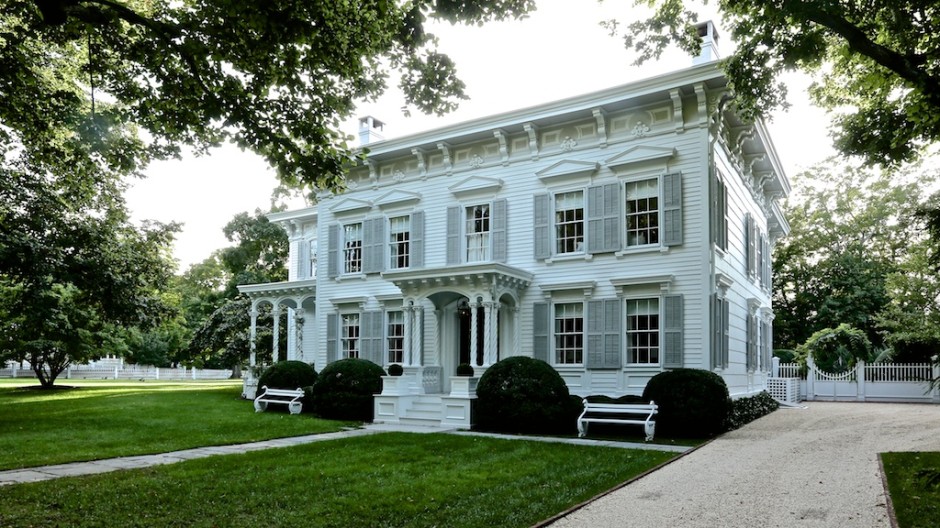
Hannibal French House, c. 1860
Built for the owner of the last of the great whaling firms, the Hannibal French House is an excellent example of Italianate of “Double Bracket” style.
—————————————
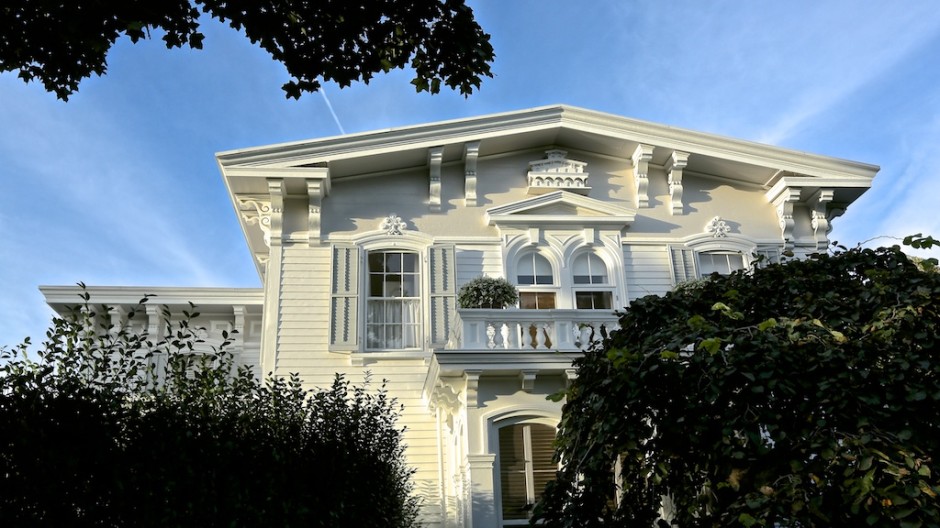
~~~~~~~~~~~~~~~~~~~~~~~~~~~~~~~~~~~~~~~~~~~~~~~~~~~~~
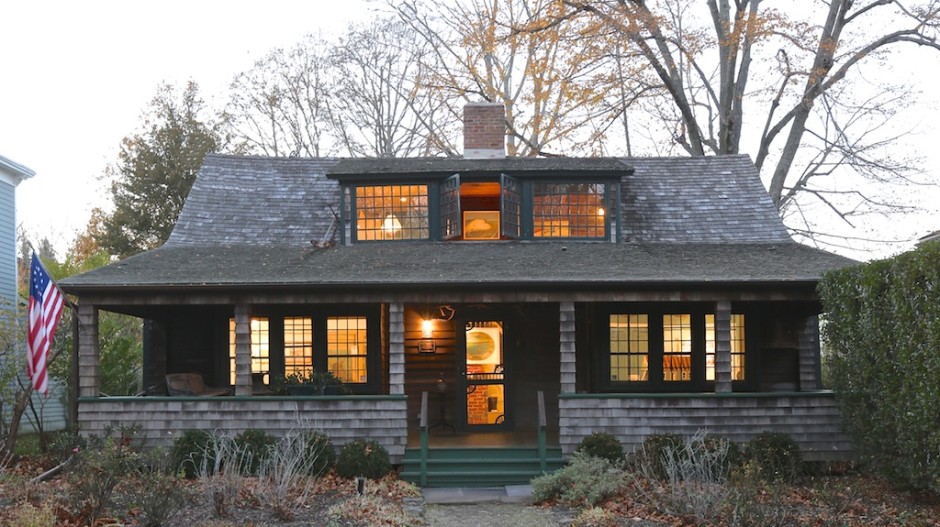
The Sag Harbor Historical Society–The Annie Cooper Boyd House
Originally this house was built as a Colonial half house in c1796 by Joseph Whitting Foster. The northern half was added by him in c1802. In 1871 William Cooper Jr. bought it for rental income. His daughter Annie Cooper Boyd, starting in 1904, added dormers, more windows, and a porch, transforming the house into a summer cottage her family named “Anchor to Windward.” Annie’s daughter Nancy Boyd Willey willed it to the Sag Harbor Historical Society in 1998, and restoration began in 2000. The house is open to the public, featuring its architecture, historical exhibits, and Annie’s paintings of old Sag Harbor. For hours, openings by appointment, and updates. (photo & caption courtesy of Sag Harbor Historical Society)
Visit: Sag Harbor Historical Society
~~~~~~~~~~~~~~~~~~~~~~~~~~~~~~~~~~~~~~~~~~~~~~~~~~~~~
Madison Street, North > South/East Side
—————————————

Prime House, c. 1795
The “half house” form such as the Prime House was popular in the Federal period. This 2-story, 3-bay home is a typical example of this vernacular style.
~~~~~~~~~~~~~~~~~~~~~~~~~~~~~~~~~~~~~~~~~~~~~~~~~~~~~
Madison Street, North > South/West Side
—————————————

Methodist Church, c. 1835/64 > The Church, 2021 (an artist residency & exhibition space)
Originally built in 1835, this church was dismantled, rebuilt and redesigned in the 1864 Italianate mode. Note the Tuscan belltower and round-headed windows.
Visit: www.thechurchsagharbor.org
~~~~~~~~~~~~~~~~~~~~~~~~~~~~~~~~~~~~~~~~~~~~~~~~~~~~~
Northwest Corner of Sage & Church Streets
—————————————
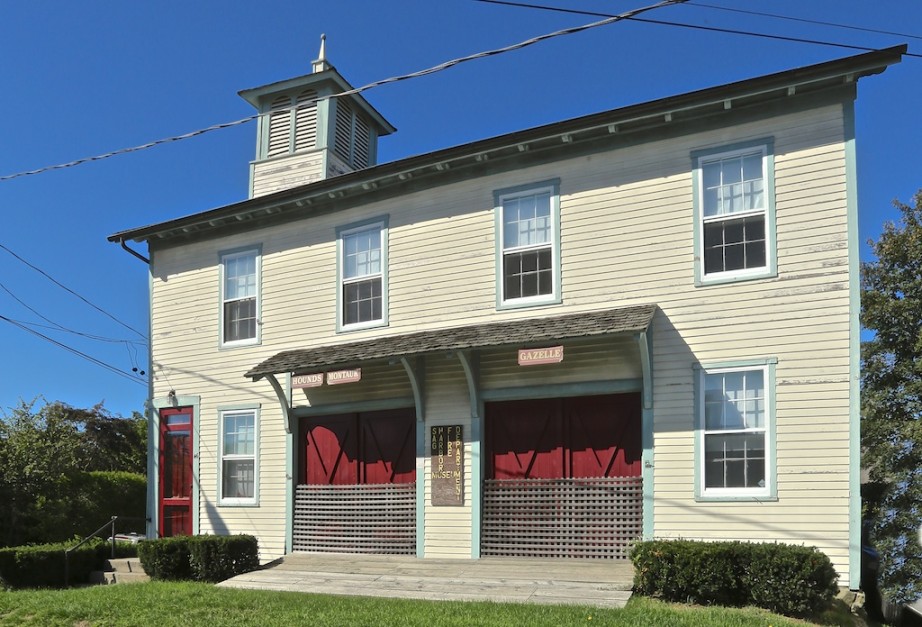
Fire Museum, c. 1835
The Montauk Hose building has also served as town office, school and a jail, as well as the fire station. It now houses a museum dedicated to the Sag Harbor Fire Department, the oldest in New York State.
—————————————

~~~~~~~~~~~~~~~~~~~~~~~~~~~~~~~~~~~~~~~~~~~~~~~~~~~~~
Sage, Church, Washington & Division Streets
—————————————
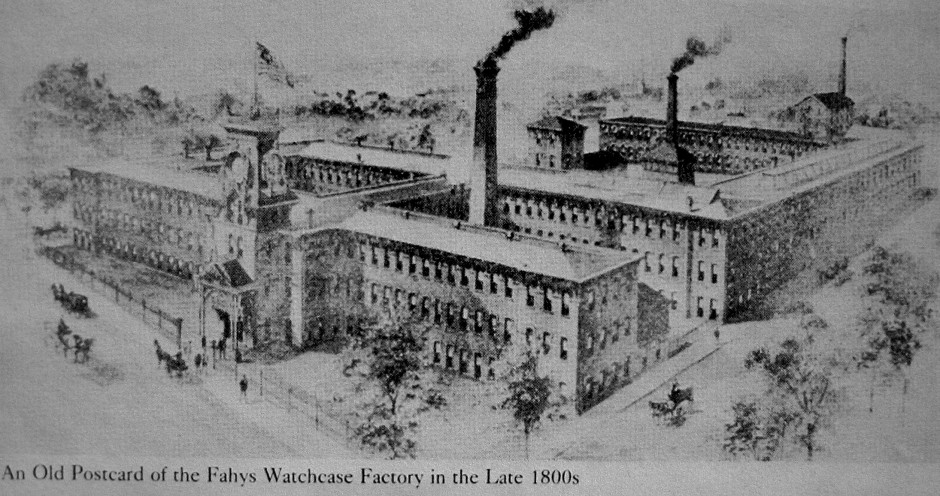
FAHYS’ WATCHCASE FACTORY: In 1880 the Business Aid Committee of Sag Harbor persuaded entrepreneur Joseph Fahys to relocate his watchcase factory from New Jersey to Sag Harbor. Fahys built an immense factory that would employ 400 workers and stabilize Village employment for decades—also spawning the successful Alvin Silver Company. Fahys Watchcase Factory closed in 1931, leaving a gap in employment opportunities. In 1937 Bulova Watch Company located a subsidiary here. That eventually floundered and the building closed in 1980. The building was unoccupied until the early 21st Century when it was purchased and extensive rehabilitation was begun to convert it into condominiums. (Sag Harbor Historical Society)
—————————————

—————————————
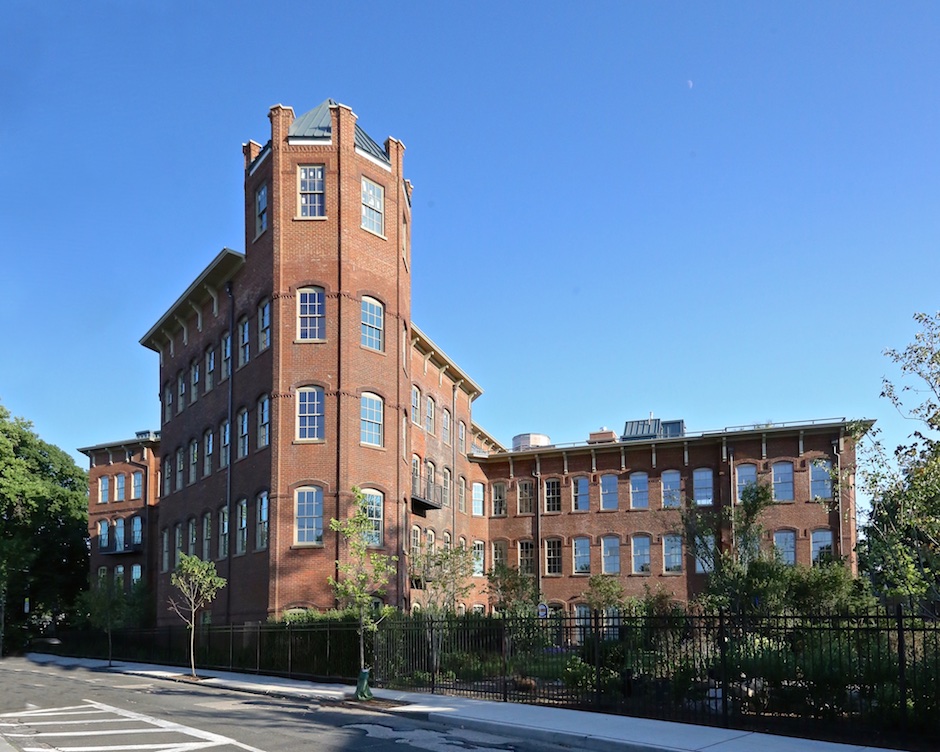
Former site of Fahys Watchcase Factory, Washington Street, July 23, 2015.
~~~~~~~~~~~~~~~~~~~~~~~~~~~~~~~~~~~~~~~~~~~~~~~~~~~~~
Union Street, East > West/South Side
—————————————

1693 House
Originally built in Sagaponack, this cottage has been moved five times. The overall proportions, roof pitch, and three-bay, side entrance design of the colonial “half house” has been retained in this 17th century building’s restoration.
~~~~~~~~~~~~~~~~~~~~~~~~~~~~~~~~~~~~~~~~~~~~~~~~~~~~~
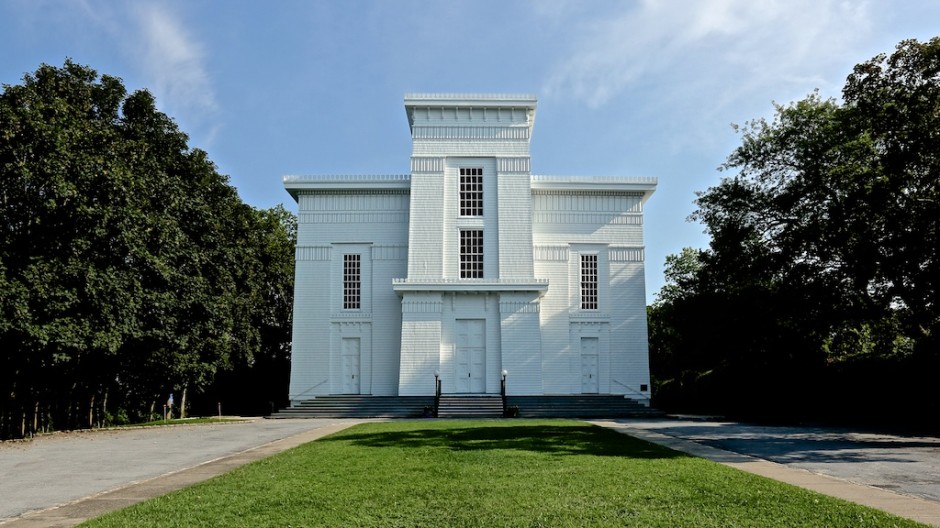
Whalers’ Church, c. 1843, A National Historic Landmark
Built in 1843-44, this church was erected as a monument to the town’s whaling prosperity. Designed by noted architect Minard Lafever, the exterior is the best example of the Egyptian Revival style in the United States today, and its decoration includes a blubber-spade motif along the roofline. Originally, the church was topped with a 185-foot steeple visible to ships rounding Montauk Point as a welcoming beacon. The steeple was lifted off intact by the 1938 hurricane and smashed into the Old Burying Ground. It was never rebuilt. (Sag Harbor Historical Society)
See Album Addendum for archival photograph of the Whalers’ Church with steeple.
————————————— 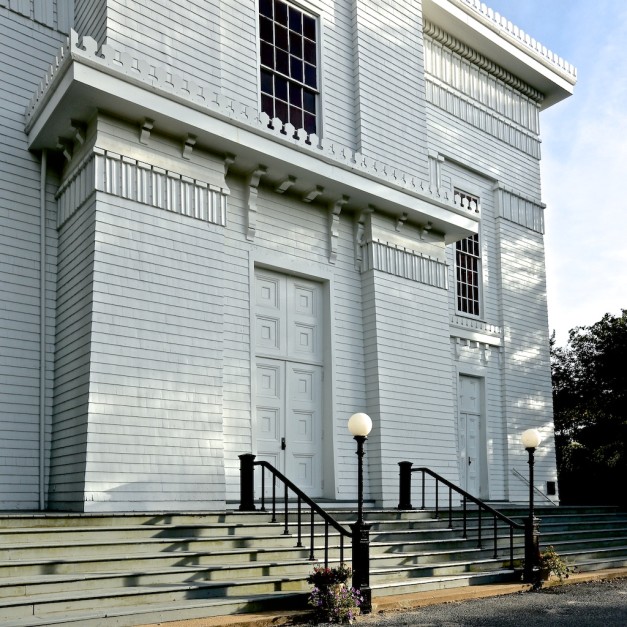
—————————————
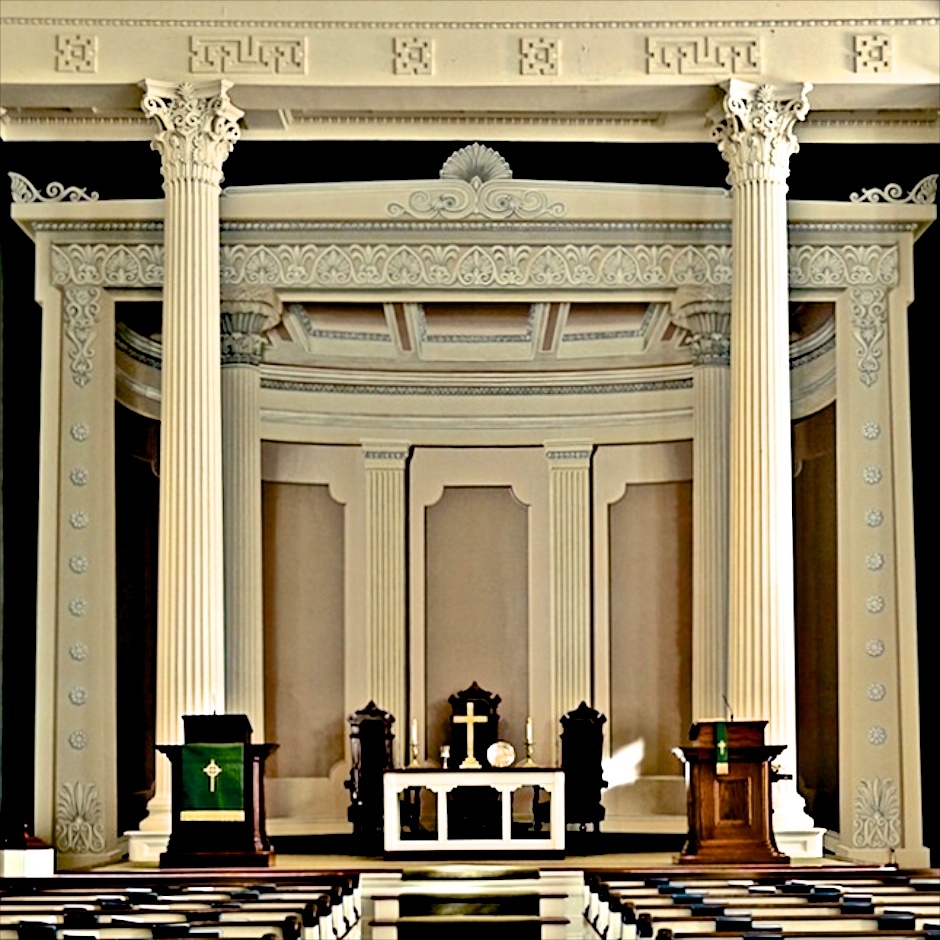
—————————————
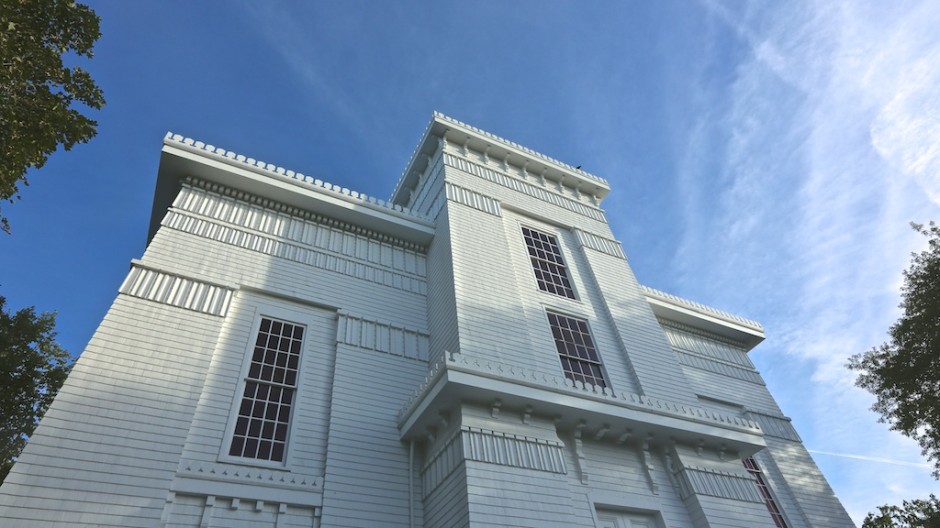
—————————————

—————————————
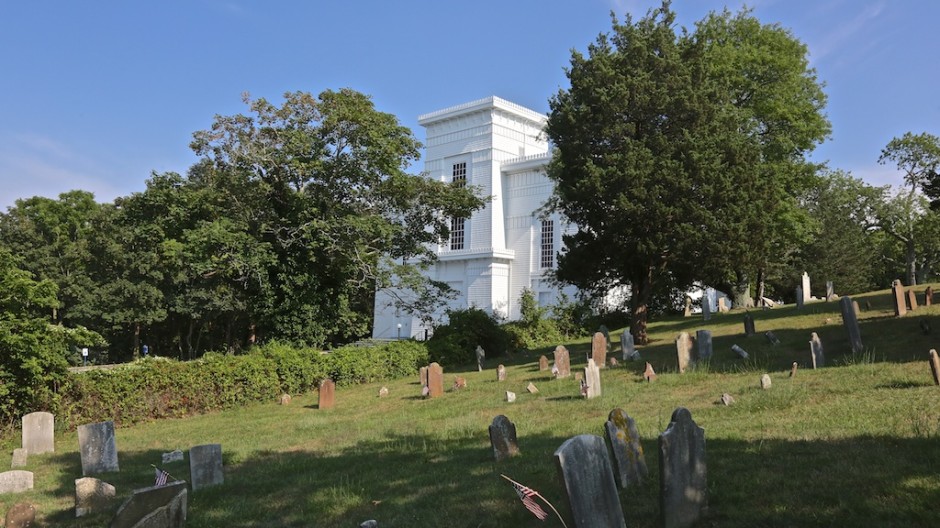
~~~~~~~~~~~~~~~~~~~~~~~~~~~~~~~~~~~~~~~~~~~~~~~~~~~~~

Old Burial Ground
Although adjoining the Presbyterian Church, the Old Burying Ground was a village cemetery, with the first burials the infant children of Tory Innkeeper, James Howell. They were buried in 1767 in unmarked graves. Used for about 100 years, the Old Burying Ground is the resting place of Sag Harbor’s early residents, Revolutionary War Patriots, Whaling Captains, Portuguese Seamen, African Americans, and the founding fathers of the village. The last person to be buried here was Hetty Parker, who died in 1870. [Placard, Old Burying Ground]
—————————————
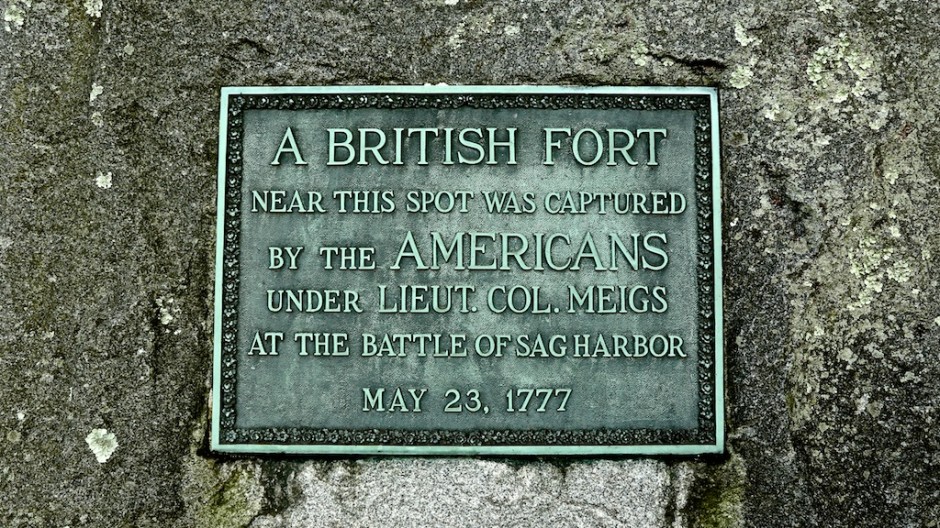
Meigs Monument, Old Burial Ground
In 1777, during the Revolutionary War, Lieut. Col. Meigs captured the British garrison here. He also seized the British officers at James Howell’s Inn and destroyed a number of British ships and crucial provisions in the harbor. Meigs operated as a privateer from Connecticut where patriots fled after the Battle of Long Island. The Island became a British stronghold and the effect of this small, but flawless operation was a boost to the Continental Army suffering from a string of recent defeats. (Sag Harbor Historical Society)
—————————————
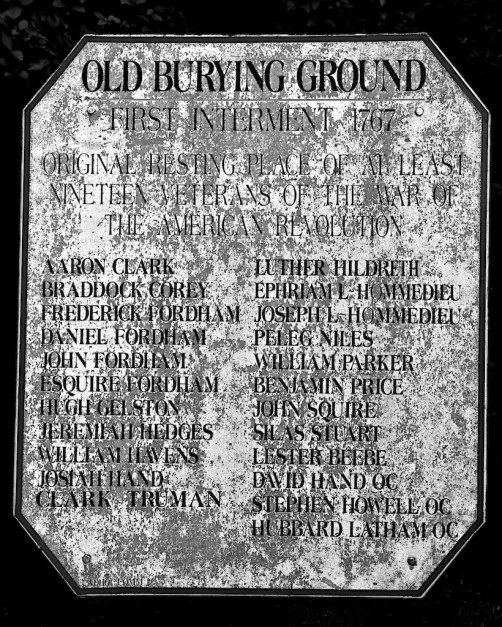
First Internment, 1767
~~~~~~~~~~~~~~~~~~~~~~~~~~~~~~~~~~~~~~~~~~~~~~~~~~~~~
Northwest Corner of Madison & Union
—————————————
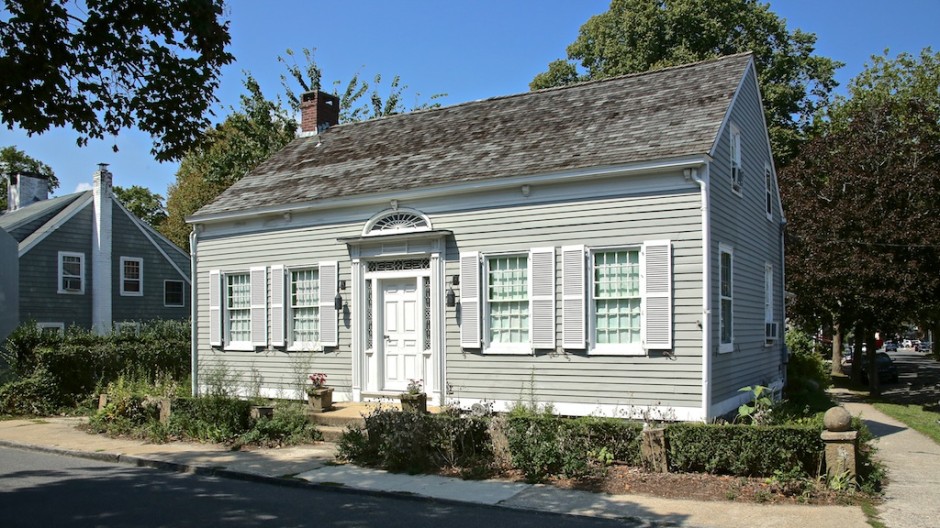
Jared Wade House, c. 1797
Sag Harbor’s Federal doorways or “frontispieces” are a delight to behold. This example is a vernacular masterpiece. Wade’s ship, the Montevideo, took Sag Harborites to the West during the 1849 gold rush.
—————————————
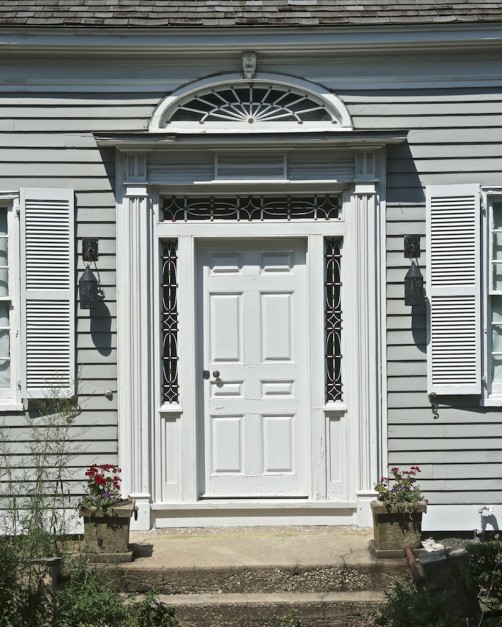
~~~~~~~~~~~~~~~~~~~~~~~~~~~~~~~~~~~~~~~~~~~~~~~~~~~~~
Jermain Avenue, East > West/South Side
—————————————

Pierson Middle-High School, 1908. Archival postcard courtesy of the Southold Free Library Whitaker Historical Collection.
One of many philanthropic ventures in Sag Harbor, Person Middle-High School was the gift of Mrs. Russell Sage, completed in 1908 at a cost of $102,000. Formerly, students had attended class in the upper stories of Village Hall on Main Street. The school was named for Mrs. Sage’s ancestor, Abraham Pierson, and reflected her interest in using public schools as a way of improving the recreational life and living conditions among local residents.
— Historic Division, Southampton Town Clerk
—————————————

August, 2016
~~~~~~~~~~~~~~~~~~~~~~~~~~~~~~~~~~~~~~~~~~~~~~~~~~~~~
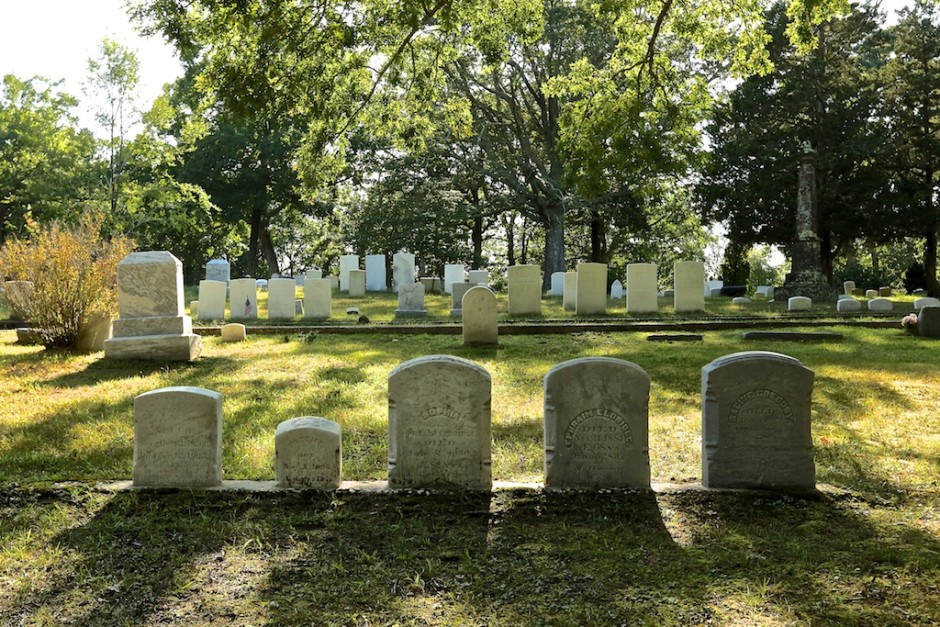
The Oakland Cemetery
Opened for burials in 1840, this 10-acre cemetery contains the graves of Capt. David Hand and his five wives. Nearby is the Broken Mast Monument, a moving tribute to whalers who lost their lives “in actual encounter with monsters of the deep.” Both are located along the westernmost lane in the cemetery, as is the gravesite of ballet master George Balanchine.
—————————————

Broken Mast Monument, Oakland Cemetery
—————————————
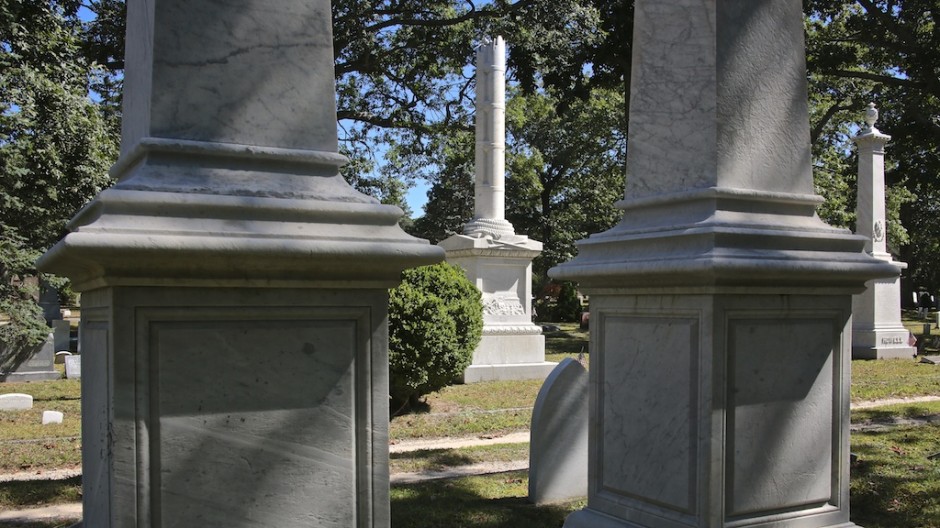
—————————————
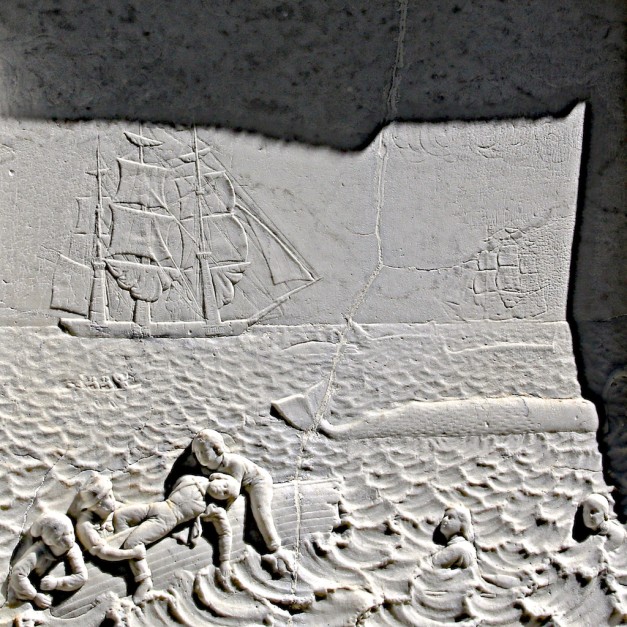
—————————————

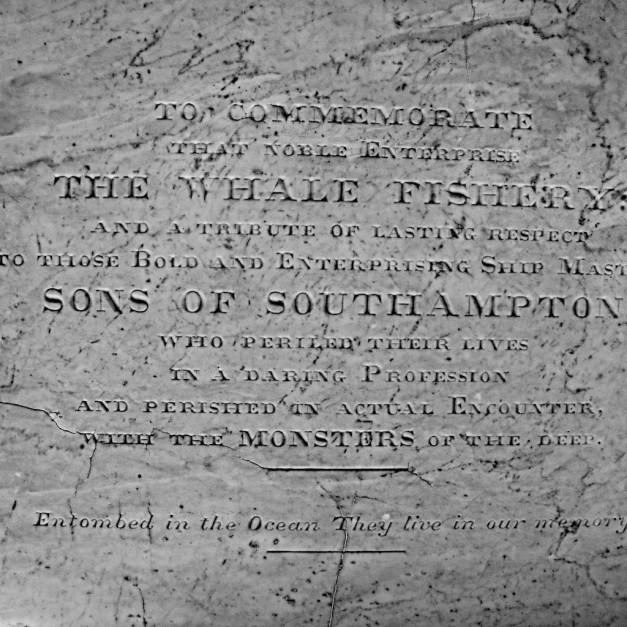
Inscription, Broken Mast Monument, Oakland Cemetery
TO COMMEMORATE
THAT NOBLE ENTERPRISE
THE WHALE FISHERY
AND A TRIBUTE OF LASTING RESPECT
TO THOSE BOLD AND ENTERPRISING SHIP MAST
SONS OF SOUTHAMPTON
WHO PERILED THEIR LIVES
IN A DARING PROFESSION
AND PERISHED IN ACTUAL ENCOUNTER
WITH THE MONSTERS OF THE DEEP.
Entombed in the Ocean. They live in our memory.
—————————————
Broken Mast Monument sculpted by Robert Eberhard Launitz in 1856
(called the “father of monumental art in America”).
— Researched by Jean Held, Sag Harbor Historical Society.
~~~~~~~~~~~~~~~~~~~~~~~~~~~~~~~~~~~~~~~~~~~~~~~~~~~~~

Byram House, c. 1852
This unusual Italianate villa was built by Sag Harbor inventor and steeple clock maker Ephraim Byram, who was also an accomplished astronomer and the inventor of the mechanical model of the solar system.
A Byram tower clock is at West Point.
~~~~~~~~~~~~~~~~~~~~~~~~~~~~~~~~~~~~~~~~~~~~~~~~~~~~~
Walking Tour: Return to Main Street via Oakland Avenue, Palmer Terrace, Suffolk Street (north)/Jefferson Street (north), or Madison Street (north). Alternate route: continue West along Jermain Street to Otter Pond and the Great War Memorial at the corner of Jermain and Main Streets, then continue north along Main Street to Sag Harbor Village.
___________________________________________________________
Captions courtesy of The Society for the Preservation of Long Island Antiquities (SPLIA),
and the Sag Harbor Historical Society.
www.preservationlongisland.org (formerly SPLIA)
———————————————–
www.sagharborhistoricalsociety.org
_____________________________________________________________
Photographs copyright Jeff Heatley.
~~~~~~~~~~~~~~~~~~~~~~~~~~~~~~~~~~~~~~~~~~~~~~~~~~~~~
*Album Addendum*
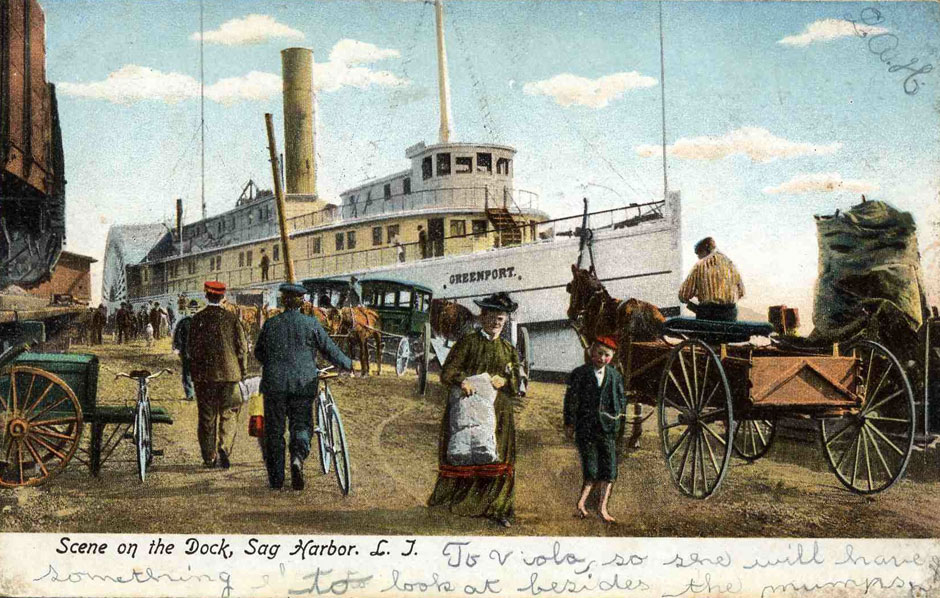
Long Wharf, Sag Harbor
Eric Woodward’s Postcard Collection
Visit: aaqeastend.com/contents/woodward-local-postcard-sampling/
~~~~~~~~~~~~~~~~~~~~~~~~~~~~~~~~~~~~~~~~~~~~~~~~~~~~~
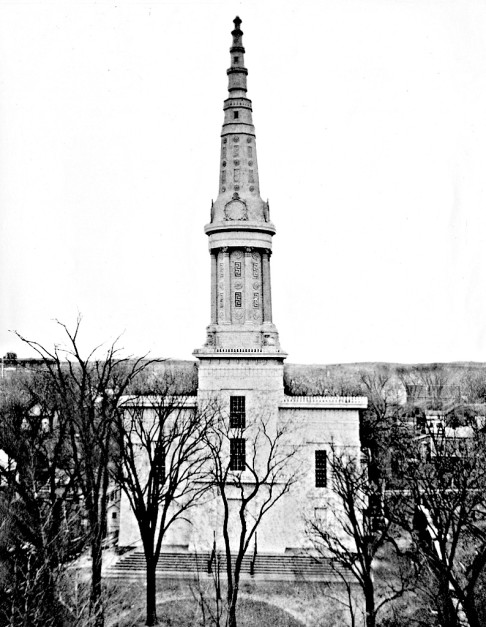
Old Whalers Church as it looked prior to 1938 hurricane. (Photo courtesy of Sag Harbor Historical Society.)
—————————————
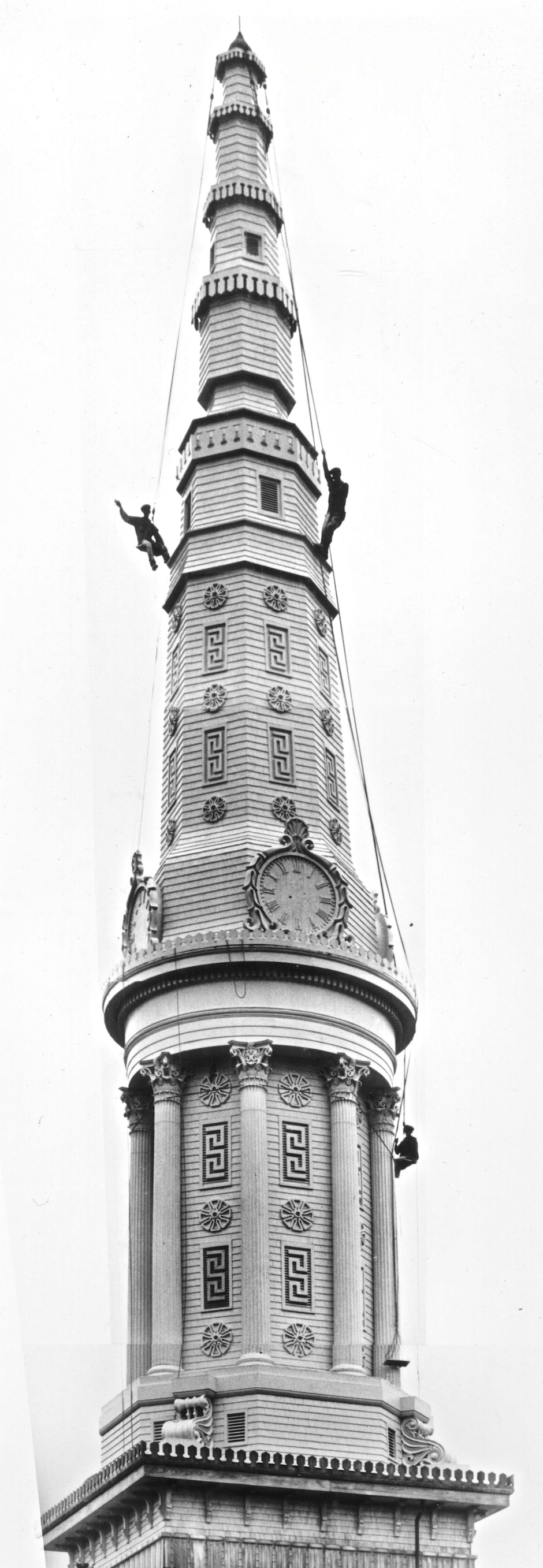
Old Whalers Church Steeple, 1926.
The steeple was amazing in design and construction. It was shaped like a sailor’s spyglass, an appropriate form, as it was the most prominent landmark that a homesick whaler would look for as he approached port. It was divided into three sections: the lowest section was a circular temple form in the style of Christopher Wren, where the bell was housed; the second section was octagonal and vaguely Greek or Phoenician in design; the third seemed to derive from both a minaret and a pagoda. There were also volutes, rosettes, and a rectangular fretwork throughout its height. In all it was 187 feet tall. The sections grew smaller in circumference as the tower rose, and it was constructed by bringing each completed section up through the wider sections below, by means of blocks and tackle, powered by oxen….
The steeple of the Whaler’s Church was blown down in the great hurricane of 1938. Mr. Cleveland, the sexton of the church at the time, described the spectacular scene to Berton Roueche, who wrote a well-known piece called “The Steeple” for The New Yorker of March 5, 1949:
“September 21, 1938 at 3:30 in the afternoon, was the date. Well, see the new-looking concrete in the walk there, alongside the burying ground wall? That’s where the butt of the steeple hit. I live just the other side of the burying ground, and I was looking out the window and I saw it go. What happened was the wind caught under the louvers in the Sir Christopher Wren section. It lifted the whole shebang straight up in the air–the whole 150 or more feet of it–swung it clear of the building, and dropped it on the walk there. Then it toppled over into the burying ground and smashed to smithereens. All except the bell. That didn’t get a scratch on it.”
— Guide to Sag Harbor: Landmarks, Homes & History by Henry Weisburg & Lisa Donneson, 1975
~~~~~~~~~~~~~~~~~~~~~~~~~~~~~~~~~~~~~~~~~~~~~~~~~~~~~
Great War Memorial Unveiling July 4 th
On July 4, 1924, a memorial to men and women of Sag Harbor who served in the World War, will be unveiled and dedicated. A native boulder has been chosen. It was found at the premises of the Sea View House [nearly at the top of hill on Brick Kiln Road] of John K. Morris. Joseph Miller of East Hampton is moving the massive 40-ton rock. The boulder will be placed upon a concrete pedestal, surmounted by a bronze eagle. A bronze plate will carry the names of more than 200 of Sag Harbor’s participators in the war.
The site chosen for the memorial is the triangular green at south side of Otter Pond. The boulder and its apex ornamentation will stand 14 feet high. It will face toward Main street and Noyac road [Brick Kiln Road]. The grounds, a part of Mashashimuet park, will in themselves form a very pretty public park.
The committee is making an appeal for more funds for this worthy memorial project. To date about $1,281.00 has been raised. It is estimated nearly as much more will be required to pay all expenses.



